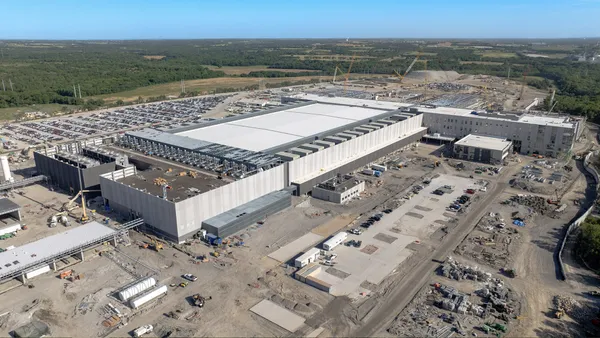Commercial real estate and development company JLL (Jones Lang LaSalle Inc.) has issued its U.S. Construction Outlook report for 2020 and predicts what has become an industry mantra as of late — slow and steady.
Construction industry volume and employment should remain flat this year on the heels of two years of decreasing confidence and an overall downward trend in the value of construction starts, according to JLL, and there should be little change to nonresidential construction spending. The firm expects spending to increase by less than 2%.
Another holdover from 2019 is the widening gap between construction growth in the public and private sectors. Those who specialize in government work, namely healthcare, education, transportation and water-related projects, will likely see growth in the coming year, according to a self-reporting survey conducted by Engineering News-Record that JLL cites in the report. Those invested in private multifamily, commercial office space and hotel projects will not fare as well, with between 40% and 60% of those firms reporting that they are forecasting declining activity in those sectors in the next 12-18 months.
Contributing to the overall economic environment of the commercial construction industry are the usual suspects of rising material costs and trade policies. But this year has seen a new and unexpected entrant on that list — SARS-CoV-2 , also known as the coronavirus, JLL said.
The disease has spread around the world in a relatively short period of time. It started in China, where the largest number of positive diagnoses and deaths have occurred as of early March. If the outbreak causes a slowdown in Chinese manufacturing, JLL reported, the resulting shortages could drive costs up for materials and equipment headed to the U.S. Approximately one-quarter to one-third of all construction products used in the U.S. are imported from China.
Other JLL 2020 predictions include:
- Not taking into consideration the impact of coronavirus, construction cost inflation should land somewhere between 1% and 3%.
- Material costs could decrease by as much as 1% or rise by 4%.
- Labor costs should increase between 2% and 4%.
Despite an expected dip in GDP in the 1% to 2% range, from 2.3% in 2019, the U.S. economic engine should be strong enough to keep the construction industry on an even keel, but the lack of private investment will keep robust growth out of reach, the report states.
Trade policies will not have the same impact they did in 2019 because of the ratification of the USMCA (U.S.-Mexico-Canada Agreement), which should restore stability to much of the materials market, and the beginnings of a rollback of U.S.-Chinese tariffs. Steel products should see the biggest drop in price this year, with concrete prices expected to rise by 3%, according to the real estate company.
Trends in tech and modular construction
There are a few industry trends absent from JLL's outlook, however, so Construction Dive asked Henry D’Esposito, JLL's construction research lead for the Americas, about the role of technology and modular construction in the coming year.
"Adoption of construction technology is happening more quickly every year, and we expect to see more of the same in 2020," he said. The uptick means construction firms, more and more, are seeing immediate benefits like shorter schedules, improved safety, less waste, and bottom line improvements to project profitability from these solutions.
"In 2020," D’Esposito said, "it will be the norm for any major project to implement some combination of the cutting-edge technology tools on the market, because to not do so would mean leaving efficiencies on the table.”
And as more projects see success with modular construction and offsite prefabrication, he said, interest among contractors and owners will increase, just as it has during the last several years.
"Well-funded companies like Katerra," D'Esposito said, “continue to advance these strategies and are now able to iterate ideas because they have completed project experience."
The combination of a shortage of labor, rising construction costs and a demand for space continue to drive project teams to look creatively at the construction process in order to solve some of those challenges, whether that means new methods like modular construction, offsite prefabrication or the use of cross-laminated timber D'Esposito said.
"Owners are mostly interested in cost certainty, building performance and moving in on time," he said.




















